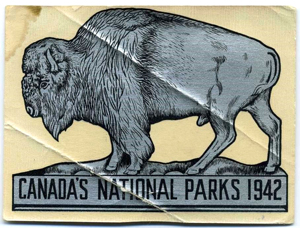|
British Columbia National Park License Plates |
|||||||||||||||||||||||||||||||||||||||||||||||||||||||||||||||||||||||||||||||||||||||||||||||||||||||||||||||||||||||||||||||||||||||||||||||||||||||||||||
Quick Links: |
whose research and writing informed much of the information found on this page.
 In 1885, a federal reserve of 26 square kilometres was set aside surrounding a hot springs in the Canadian Rockies and two years later this would be expanded to to 673 square kilometres and named "Rocky Mountains Park" - representing the first footsteps in the creation of Canada's National Park system. In 1885, a federal reserve of 26 square kilometres was set aside surrounding a hot springs in the Canadian Rockies and two years later this would be expanded to to 673 square kilometres and named "Rocky Mountains Park" - representing the first footsteps in the creation of Canada's National Park system. The subsequent construction of the Banff/Lake Louise Coach road in 1911 allowed automobile access to the park, and forever altered the way people could experience the park. In an effort to increase tourism automobile, the National Parks Branch spent a considerable amount of money on road construction in the 1920s and 1930s. These projects allowed motorists to enjoy the mountain scenery from the comfort of their vehicles and opened the parks to an unprecedented number of new tourists. This included the construction of a new road between Banff/Lake Louise that was completed in 1921 and a road between Banff and Radium opened as a link in the first public highway across the Canadian Rockies - connecting with routes to the US to form what Americans called the "Grand Circle Tour". |
According to Rubec, since 1923, Canada’s National Parks have used documents and objects - “national parks pass”, “parks automobile licence”, “national parks motor vehicle stamp”, “vehicle permit” - to indicate payment of fees for the use of a motor vehicle in the parks. The revenue raised from people driving through the parks have been used to assist Parks Canada in maintaining the lands under its responsibility. |
Rubec reports being aware of six basic designs for National Park passes across the country, however, we will only explore one of these - the Buffalo Radiator Badges visible in the B&W photos below - in a little more depth later on. Before that, however, we want to draw attention to a less well known type of British Columbia license plate associated with the National Parks. |
 |
 |
 |
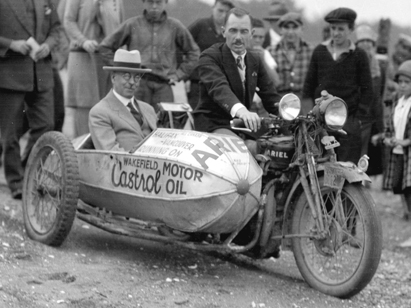 |
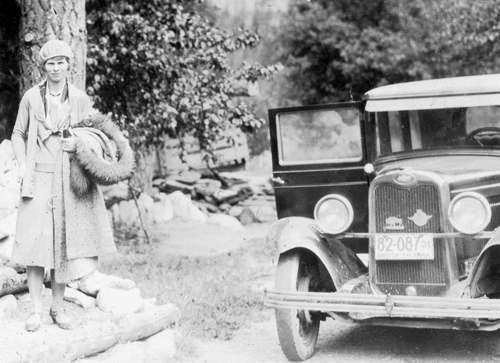 |
 |
For years it has been known that there exist Alberta licence plates from the 1920s and 1930s which had been painted with red borders and that this was done in order to identify local residents and workers who resided around the various National Parks of western Albert such as Banff so that they could freely enter and leave without needing to display the Buffalo Radiator Badges issued to tourists.. |
| Red Border British Columbia License Plates | |||||||||||||||||||||||||
|
|||||||||||||||||||||||||
|
|||||||||||||||||||||||||
As early as 1911 the National Parks were regulating automobiles by charging a fee of 25 cents to be paid to the Park Superintendent or the North West Mounted Police. By 1919, the fee was increased to $1.00 and allowed for a visit lasting up to a week. |
To keep track of motorists that had paid the requisite fee to travel through the parks, windshield decals were issued between 1911 and 1924. |
 |
 |
|
 |
||
 |
||
At top-left, the opening of the Banff-Windermere Highway in 1923. At middle-left/bottom, Rubec cites this windshield decal as measuring 228mm in width and being of black type on white paper. As is stated on the decal, it was given to travelers at the time of the opening of the Highway on June 30, 1923 and was good for a week's free travel. |
||
This changed in 1925 when the Parks Department introduced a new "beautifully designed aluminium badge which can be wired to the radiator of cars in a couple of minutes" and were considered an "improvement over the old windshield sticker." |
The new badges were to be presented to all tourists entering Rocky Mountain National Park and who paid the required $1.00 fee, with J.M. Wardle, Chief Engineer of the Parks Department, stating that it was estimated that over 20,000 would likely be issued throughout 1925. |
As the Buffalo Badge is commonly associated with the National Parks in the Rocky Mountains, including Yoho and Kootenay Parks within British Columbia, and is generally thought to overlap with the issuance of the red-bordered license plates, they shall be the only one's profiled here (reference to Rubec's publication for the other types is highly recommended). |
The badge was produced in a rotating three year cycle of copper, aluminium and brass and, based upon information stamped on the back of some of the badges, Rubec advises that the 1934 badge was made by "Pritchard/Andrews Limited", the 1935 & 1940 badges were made by "Winnipeg Brass Limited" while the 1939 badges were by the George Hewitt Company Limited of Vancouver. |
| National Park Radiator Badges (1925-1931): Walking Buffalo Design | ||
| National Park License Plate Toppers (1939 & 1940): Standing Buffalo Design | ||
|
||
As can be seen above, the first three years (1925-27) were issued without dates, as authorities relied upon the different colour of the badges to ensure that motorists were current with their fee payments. It is understood that in subsequent years, the Parks Department would re-stamp leftover stock as a cost-saving measure and that some members of the public followed suit for similar reasons! |
||
A slight modification to the design of the badges occurred in 1932 when the buffalo was no longer seen to be walking, but had now assumed a standing position. According to Pierre Delacote, this was likely done in order to add strength to the badge, as the base of the 1925-31 badges had a tendency to become separated from the legs. |
||
There is actually a great little video on YouTube with a fellow talking about his collection. I have been told that there are a few mis-steps, but that it is otherwise quite accurate: |
||
|
*
* * * * |
|||
After the badges were discontinued in 1940 (likely due to material restrictions associated with the War), the use of windshield decals was re-instituted. |
|||
|
 |
||
 |
||
Most of the 1940s decals were prodcued by the Canada Decalmania Company Limited of Toronto. |
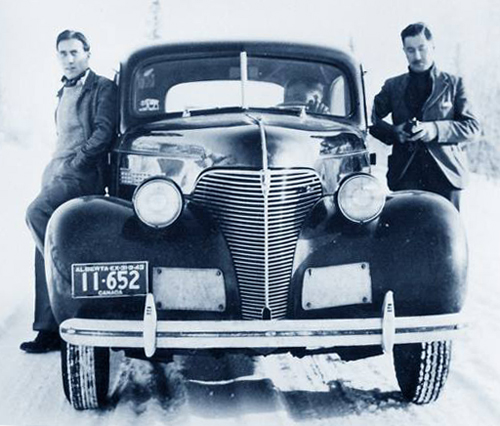 |
|
Similar to the 1941 windshiled decal shown on a car above, the image at left shows a 1942 windshield decal. Again, the Alberta license plate is a 1942 with the 1943 expiry date stamped along the top. |
| National Park License Plate Toppers: Commemorative Designs | ||
*
* * * * |
Although not specific to BC, the following windshield decals were issued by Parks Canada throughout the late 1970s and 1980s to residents of Banff and are identifiable by the use of the letter 'R' in various corners (apparently something similar might have been provided to seniors with an 'S' in place of the 'R'). |
The yellow and brown colours (classic 70s!) were usually reversed the following year, the one exception being 1981. Another neat fact, the 1982 decals were semi-transparent and had the same image on the back whereas other years were solid and usually text printed on the back. |
These decals are also a neat way to track how responsibility for Parks Canada was shifted between different ministries during the Progressive Conservative governments of Brian Mulroney. In 1988 reference to "Environment Canada Parks" begins to appear followed by "Environment Canada Canadian Parks Service" in 1989, "Environment Canada Parks Service" from 1990 through 1993 and finally "Canadian Heritage Parks Canada" in 1994. |
Thanks to Pat McCormick for providing these images! |
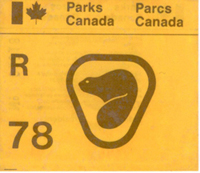 |
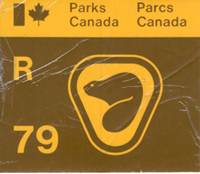 |
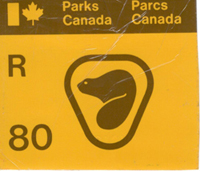 |
1981 |
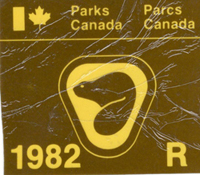 |
1983 |
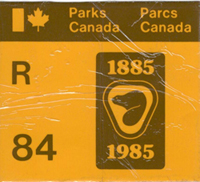 |
 |
 |
1987 |
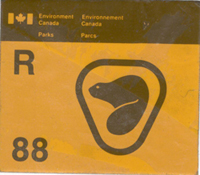 |
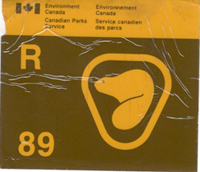 |
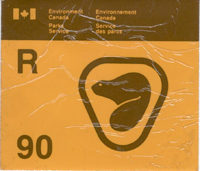 |
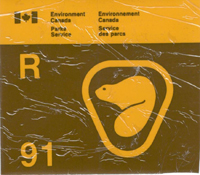 |
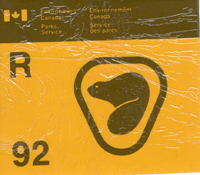 |
 |
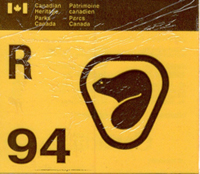 |
According to Pat McCormick, who provided the images) the 1995 pass was valid in the mountain national parks and, for some strange reason, Elk Island park as well. In 1997, the passes were called a "Community Pass", valid in the communities of Banff, Lake Louise, Field, Jasper, Waterton and Kootenay Hot Springs. Thereafter, they were specific to a particular national park (Banff in this case)! |
The passes have changed over the past 25 years from pre-printed expiry dates, to the use of punch holes to indicate expiration to now having the expiry hand-written. There have been minor modifications to the overall design as well, including reducing the size of the red panel around 2014, replacing the Canadian flag at top-left with Parks Canada's logo to the latest switch being teal instead of red shading. |
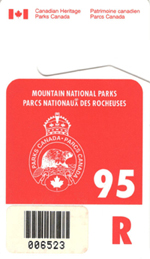 |
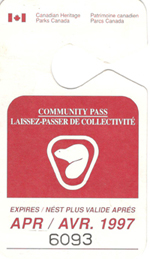 |
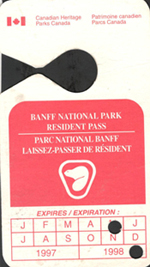 |
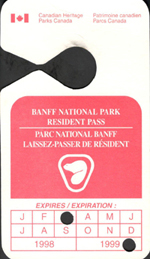 |
 |
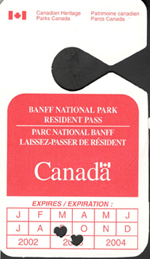 |
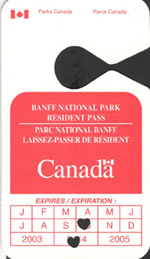 |
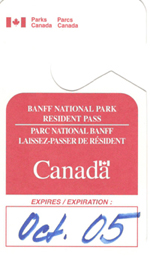 |
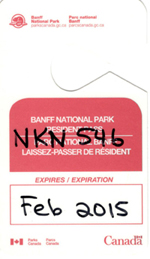 |
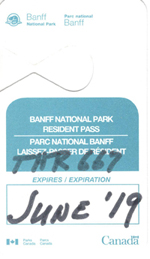 |
Quick Links: |
|
© Copyright Christopher John Garrish. All rights reserved.


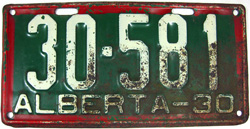
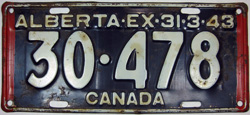

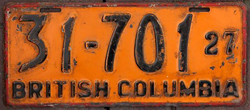
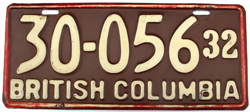
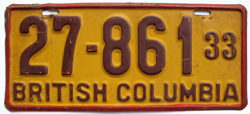
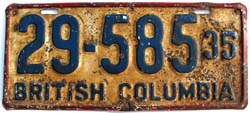
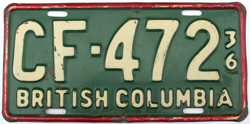
















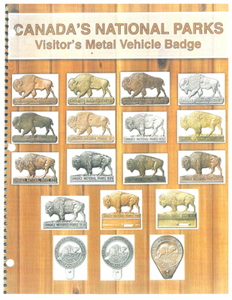

.jpg)
